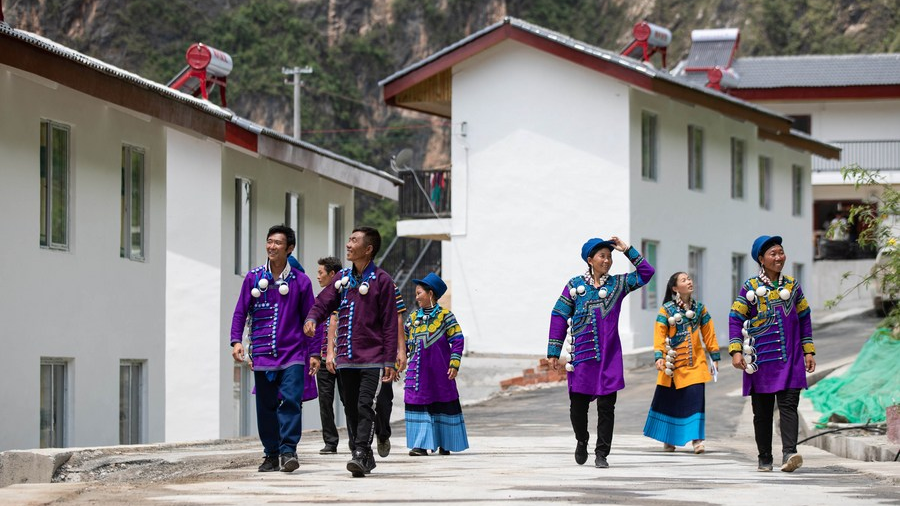03:10

Since 2012, China has mounted the world's largest-ever poverty alleviation program. Between the end of 2012 and the end of 2019, over 93 million people were lifted out of poverty. That's about 1500 poor people every hour!
During his inspection trip in northwest China's Ningxia Hui Autonomous Region last June, Chinese President Xi Jinping said no single ethnic minority group should be left behind in the country's building of a moderately prosperous society in all respects.
But some westerners think that as a result of the poverty-alleviation campaign, the culture of ethnic minorities will be impacted, even threatened. Can ethnic cultures be kept intact while bringing them out of poverty? Closer to China speaks with Tang Min, Counselor of the State Council; Wu Guobao, Director of the Center for Poverty Research, Chinese Academy of Social Sciences; and Lei Ming, Director of the Institute on Poverty Research, Peking University.

Abuluoha villagers in Butuo County of Liangshan Yi Autonomous Prefecture, southwest China's Sichuan Province, June 29, 2020. /Xinhua
Abuluoha villagers in Butuo County of Liangshan Yi Autonomous Prefecture, southwest China's Sichuan Province, June 29, 2020. /Xinhua
According to Tang Min, the undermining of minority culture by poverty alleviation is a misunderstanding. In fact, the poverty elevation program usually is not directly linked to culture. Actually, he says, China protects minority culture.
Wu Guobao suggests that the government should mainly focus on how to mitigate negative effects. For example, when ethnic minorities are relocated from remote mountainous villages to towns and cities, it is important to help them preserve traditional culture, such as by leaving spaces where they can sing and dance, and can do their handcrafts. To ethnic minorities, poverty alleviation has a larger and more positive impact on them.
According to Lei Ming, the areas of extreme poverty in China are relatively inaccessible to the outside world. And because people living there had little or no access to information from the outside world, they had no idea of what life could be like beyond their remote villages. Under these circumstances, while their happiness index was relatively high, but overall speaking, their standards of living, include the prospects for their children, were a low-levels. Lei Ming says that young people from these areas, especially those who have been working in developed regions, didn't think their happiness index was high.

